How is Netflix trying to achieve 800 Gb / s data transfer?

In recent years, the number of users of video streaming services has increased, and it is
2022-Streaming-Summit-Netflix.pdf
(PDF file) http://nabstreamingsummit.com/wp-content/uploads/2022/05/2022-Streaming-Summit-Netflix.pdf
Netflix has come a long way toward building a system that can transmit 800Gb/s of video data on a single server.

In Netflix's workload, videos are sent as 'static media files', and video quality is maintained by pre-encoding all codecs/bitrates.

The main steps in improving data transmission explained in this slide are 'Asynchronous Sendfile (2014)', 'Kernel TLS (2016)', 'NUMA (2019)', 'Inline Hardware (NIC) Kernel TLS (2022)'.

First of all, about 'Asynchronous

By using Sendfile, data is sent directly from the disk to the network card, bypassing the host CPU.

In this case, if the

Subsequently, in 2016, '

TLS is a protocol for encrypting traffic, but if data sent from disk to memory is sent to the host CPU, encrypted, sent back to memory and sent to the network card, it is not possible to send large amounts of data quickly.

Therefore, Netflix says that by implementing TLS in the kernel, the need for copying in user space and kernel space is greatly reduced and performance is improved. Note that the TLS handshake itself is processed by the host CPU.

In 2019, ``

The previous multi-CPU had equal access rights to memory, and each core could access all memory and IO devices equally and directly, but ...
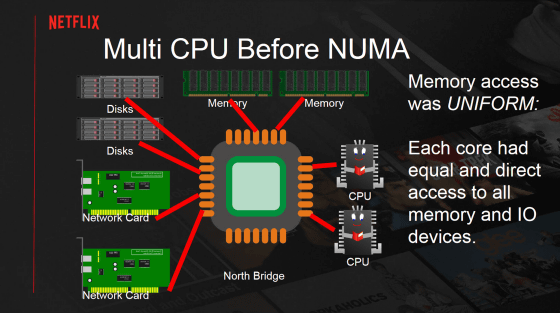
In NUMA, each core has uneven access rights and is divided into local zones called NUMA domains or NUMA nodes.

If data is exchanged across NUMA, the fabric will be saturated and it will not be able to withstand the load ...
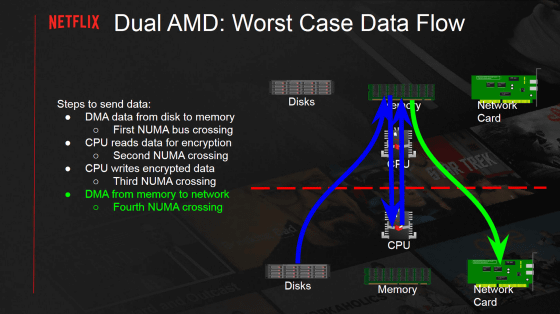
Netflix says that it allows everything to run on the NUMA node where the content is stored so that the data does not span NUMA.
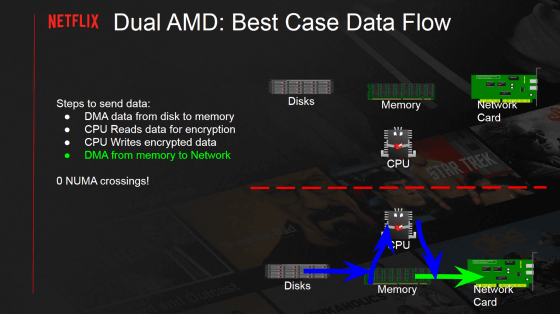
In 2022, ``inline hardware (
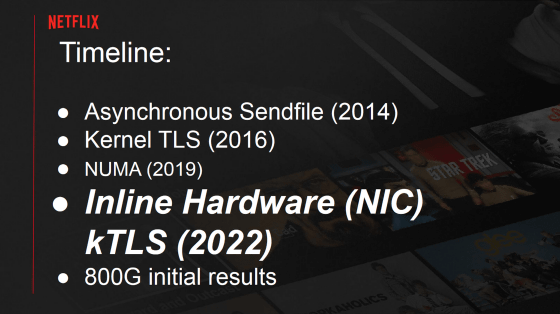
In the conventional method using Sendfile and kTLS, the data encryption itself is processed by the host CPU, but the idea is to do this in the NIC.
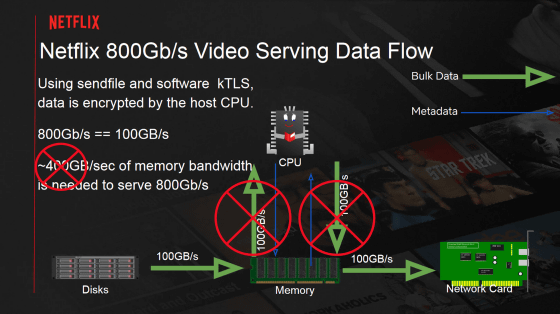
Since 2016, Netflix has been in talks with Mellanox, an Israeli data center-related semiconductor company, and has continued efforts to commercialize high-performance NICs even after
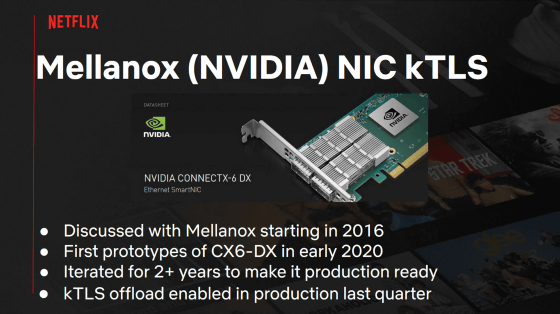
It is said that the 'NIC kTLS' method, which does not pass the data through the CPU for encryption, has been realized.
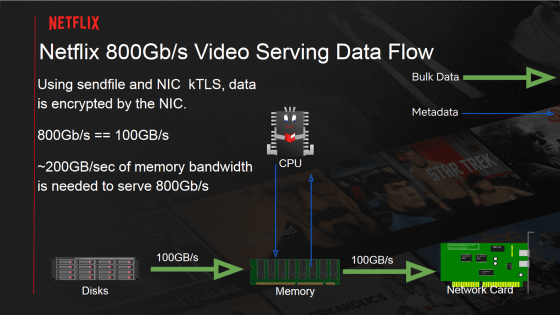
The configuration of the 800Gb / s prototype constructed in this way is 'Dell R7525', '2 AMD EPYC 7713 64c / 128t', '3 xGMI link sockets', '512GB RAM', '4 Mellanox ConnectX-6 Dx' (8 ports of 100 GbE)' '16 NVME (14 TB) compatible with Intel Gen 4 x 4'.

After trial and error using a prototype, Netflix was able to pull out performance up to 720 Gb / s.

The slide was also talked about on social news site Hacker News, saying, 'I love technical content like this. Not only is it incredibly interesting and informative, but it's also popular on forums like Hacker News.' It also serves as a counterpoint to the claim that why does Netflix need thousands of engineers? It's much more difficult,' commented .
Serving Netflix Video Traffic at 800Gb/s and Beyond [pdf] | Hacker News
https://news.ycombinator.com/item?id=32519881
Related Posts:
in Software, Web Service, Hardware, Posted by log1h_ik







